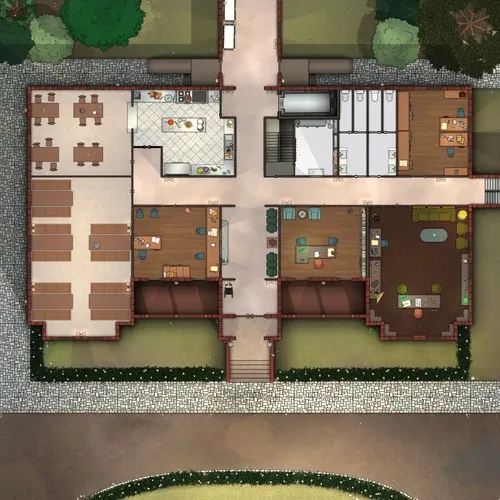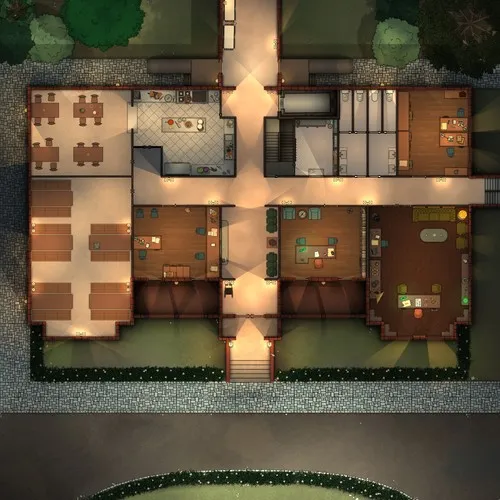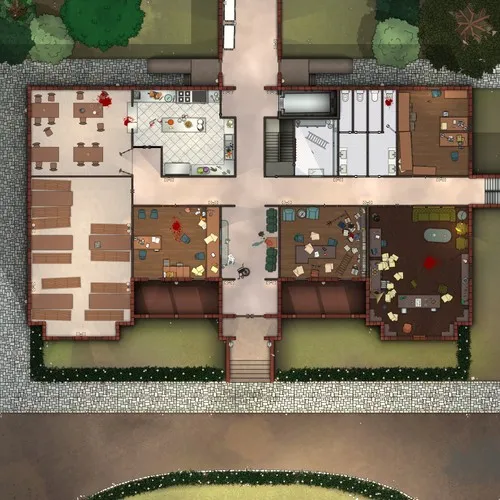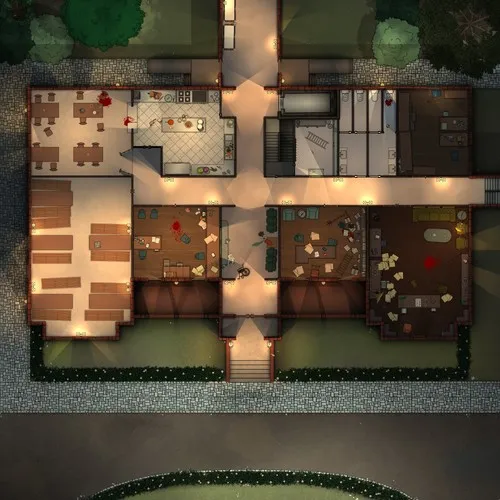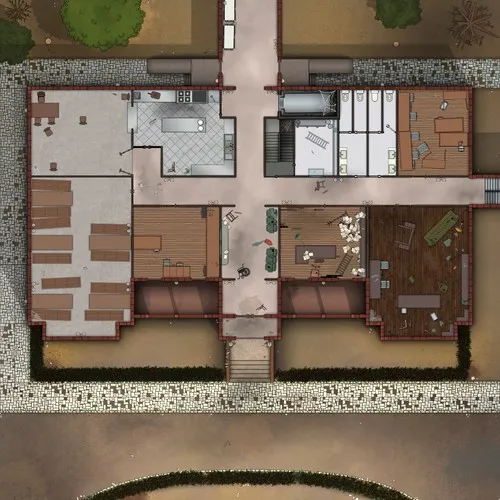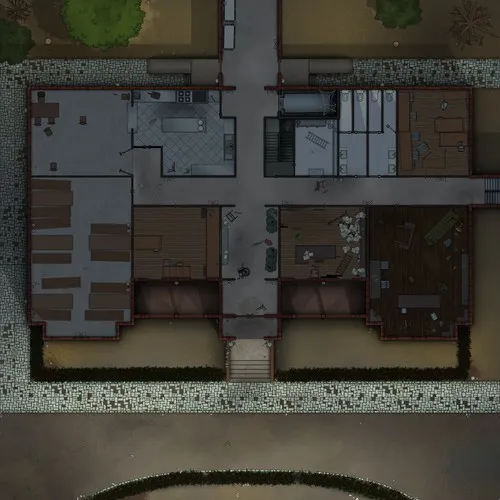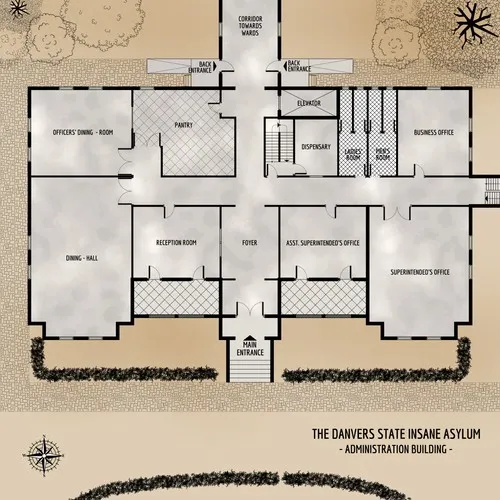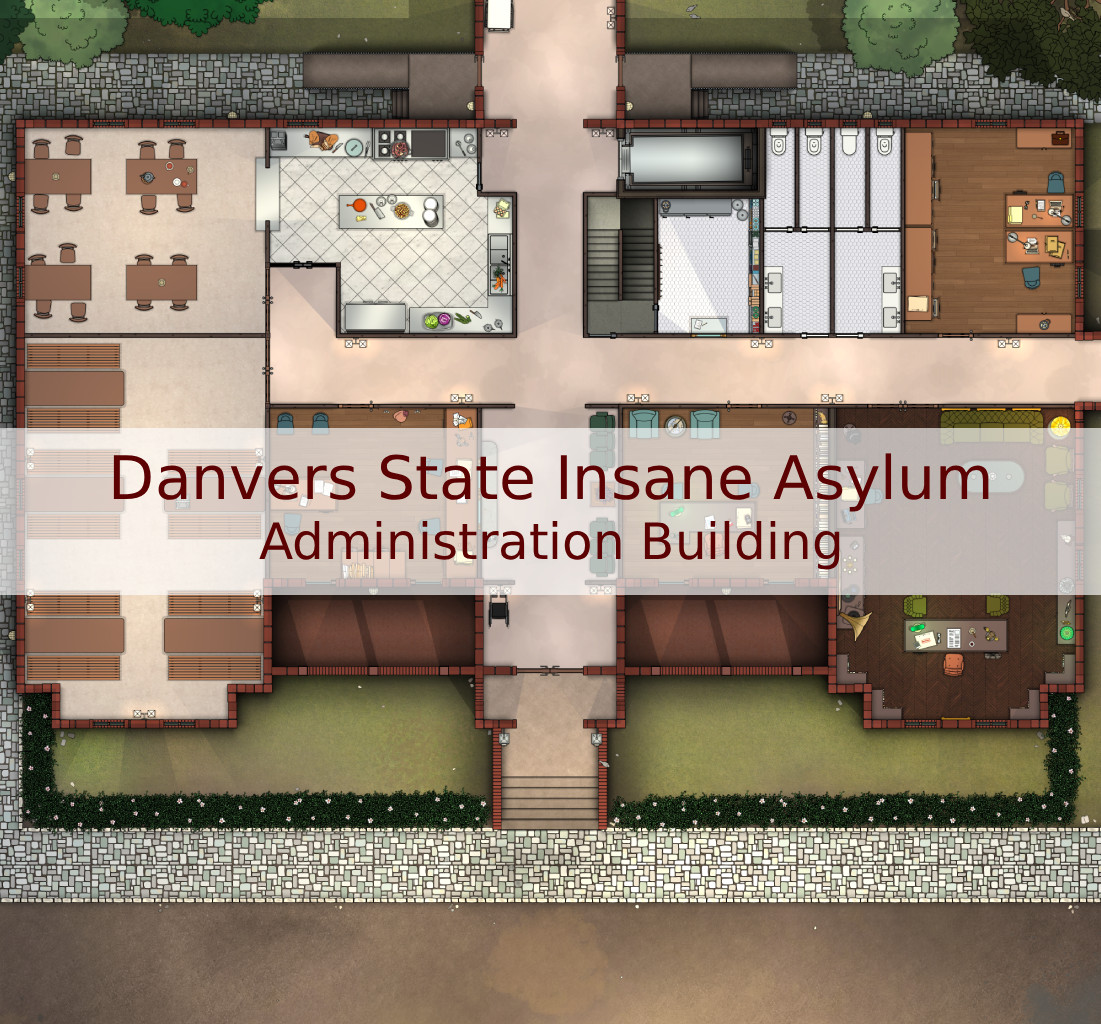What treatment was administered in the hydrotherapy rooms that left patients catatonic for weeks? Why does the administrative wing have doors that lock from the outside on both sides? Which ward did they evacuate in 1959 without explanation, sealing it behind brick? What do the orderlies mean when they whisper about "the Kirkbride's gift"? Why are there scratches on the inside of the solitary confinement doors that stop exactly at shoulder height?
Follow Cthulhu Architect on BlueSky!“Everybody was stark naked, day and night. Luckily it was hot. They let me wear socks.”
― Henri Charrière, Papillon
Dr. Helena Voss arrived at the asylum on a morning thick with fog, the building’s Gothic towers piercing the gray like broken teeth. The Kirkbride design was supposed to heal through architecture itself—each wing a progressive step toward wellness, light and air flowing through calculated corridors. The superintendent had been enthusiastic in his letters. They needed a physician who specialized in disorders of perception.
She found her first patient in the east wing, a woman named Clara who sat perfectly still by the window. Clara had been a mathematician before her admission. Now she spent her days counting the windows visible from her room, writing the numbers on her palm with a fingernail.
“Thirty-seven,” Clara whispered. “But there should be thirty-six. The building is symmetrical. Where is the extra window?”
Helena checked the architectural plans that evening. The building was indeed symmetrical. Thirty-six windows faced the courtyard from each wing.
She began to notice other discrepancies. Corridors that appeared on the plans but ended in smooth walls. A door in the rotunda that her key wouldn’t open, though it matched all the others. Patients who insisted their rooms changed shape at night, walls pressing inward by inches.
The hydrotherapy rooms were the worst. The superintendent insisted the treatments were therapeutic—prolonged submersion in ice-cold water to “shock the system into clarity.” But Helena found the logs. Patients emerged different. Quieter. Their eyes tracked movement with an intensity that suggested they were seeing through objects rather than at them.
“The building teaches them,” an elderly orderly told her one night. He’d worked there since it opened. “Dr. Kirkbride understood something about angles. About how space can press on the mind. Make it… pliable.”
Helena started sleeping in her office. The residential wing for staff felt wrong at night—the proportions of her room subtly incorrect, the corner where two walls met creating an angle that hurt to look at directly.
She found the sealed ward by accident, following a patient who’d wandered from the day room. The woman walked with purpose through a service corridor, stopping at a brick wall that looked decades old. She pressed her palms against it and hummed—a low, resonant sound that made Helena’s teeth ache.
“They’re still receiving treatment,” the patient said. “Can’t you hear them getting better?”
That night, Helena reviewed the admission records. Thousands of patients over the decades. But the discharge records told a different story. So few released. Even fewer deaths. The numbers didn’t balance.
She began her own count, walking the wards with a notebook. Patients in the east wing, the west wing, the chapel, the dining hall. She counted twice, three times. The number changed each time, always increasing, though no ambulances arrived.
The superintendent found her in the rotunda at dawn, still counting.
“Dr. Voss,” he said gently. “You look unwell. Perhaps you should rest in the hydrotherapy room. The cold water brings such clarity.”
Helena looked at him—really looked. His shadow fell wrong on the curved walls, bending at angles that defied the light source. Behind him, through the window, she could see the east wing.
Thirty-seven windows. No, thirty-eight. No—
“The building is full,” she heard herself say. “But there’s always room for one more.”
The superintendent smiled. “The Kirkbride design is endlessly accommodating. Dr. Kirkbride understood that healing is about fitting the patient to the space. Come. Let me show you your room.”
Helena followed him up the grand staircase, her feet moving automatically. Around her, the walls hummed with the sound of a thousand voices achieving perfect, geometric wellness. The architecture of care, she thought distantly, was simply a matter of finding the right angle.
By the time they reached the locked door—the one her key had never opened—she’d already forgotten why she’d wanted to leave.
